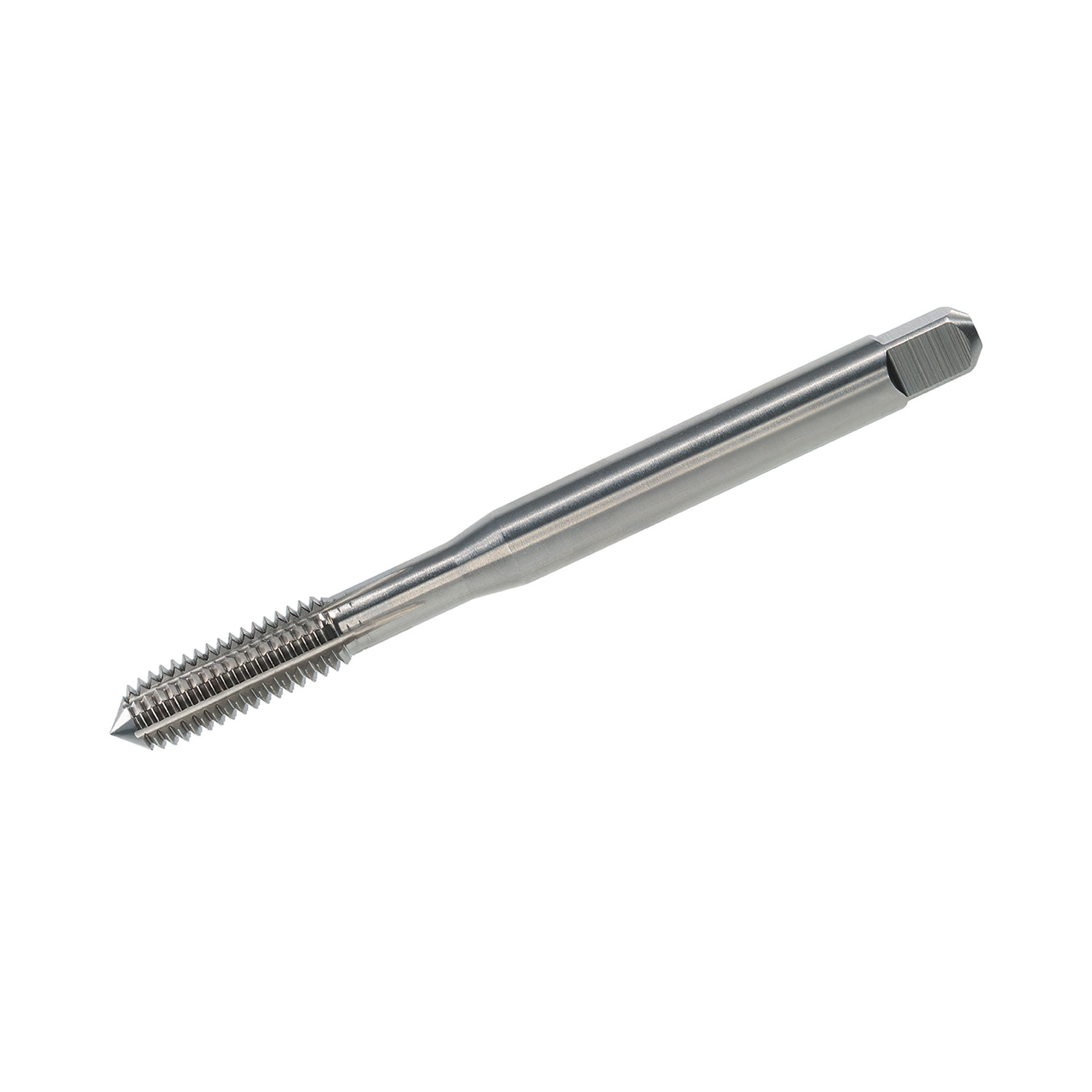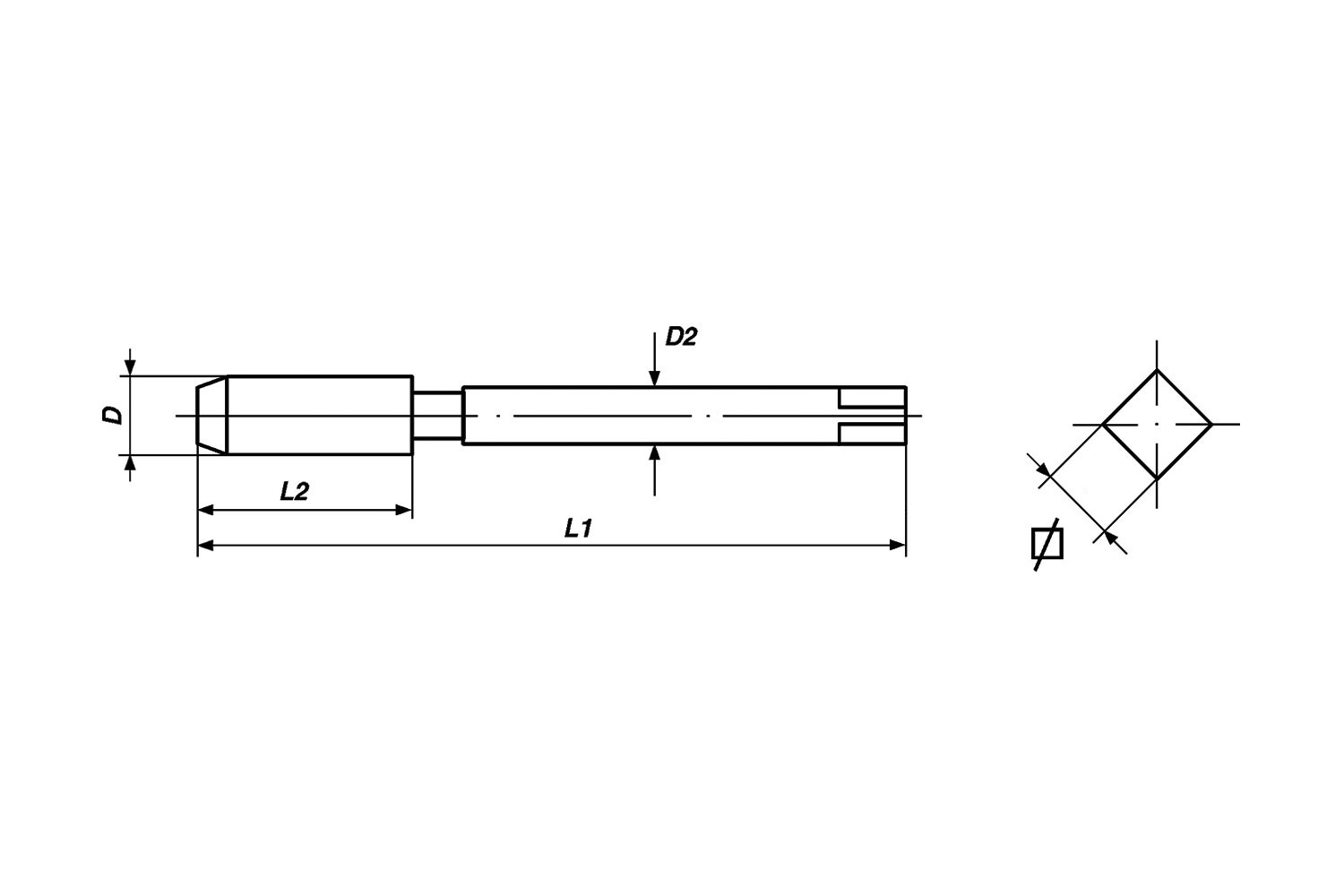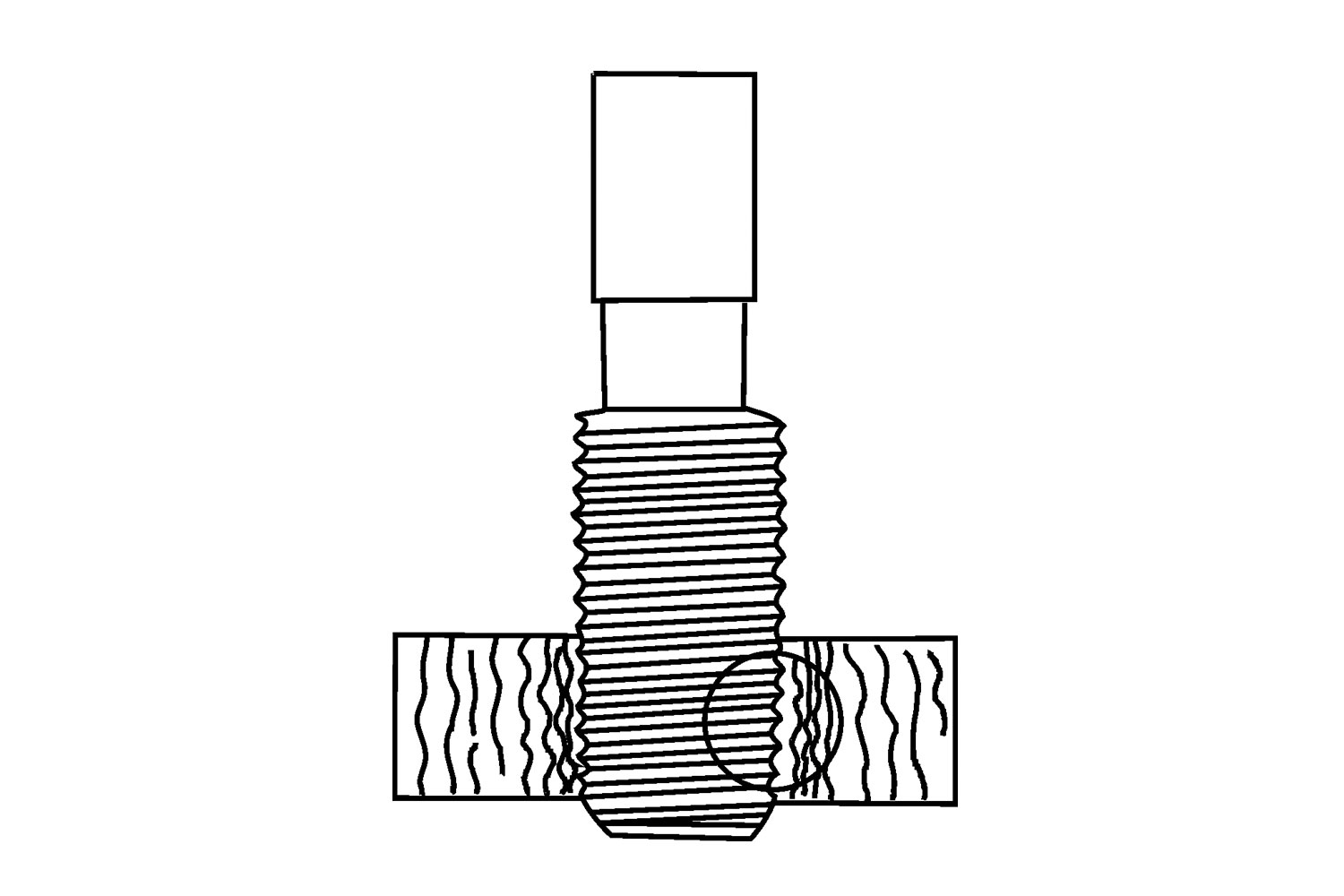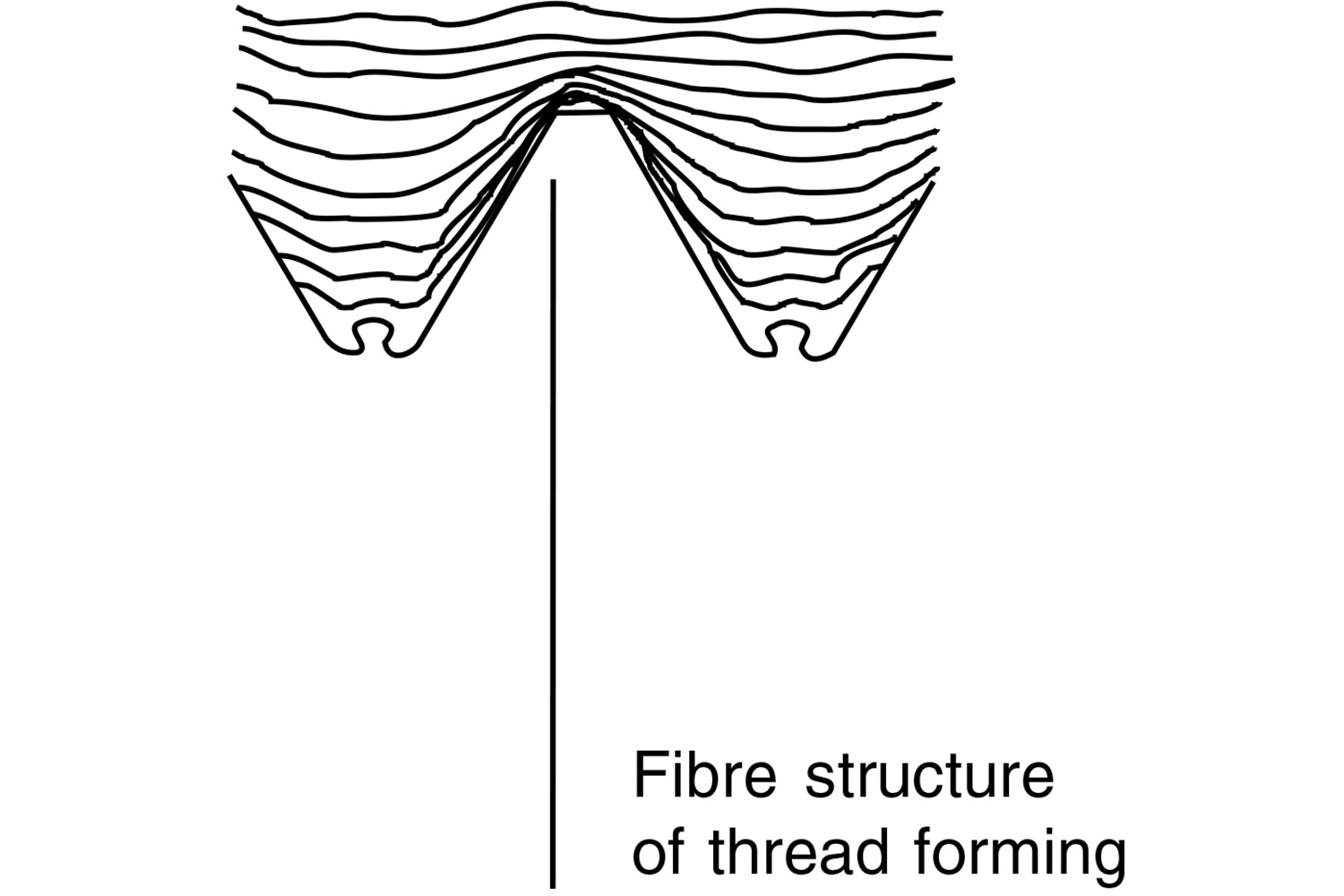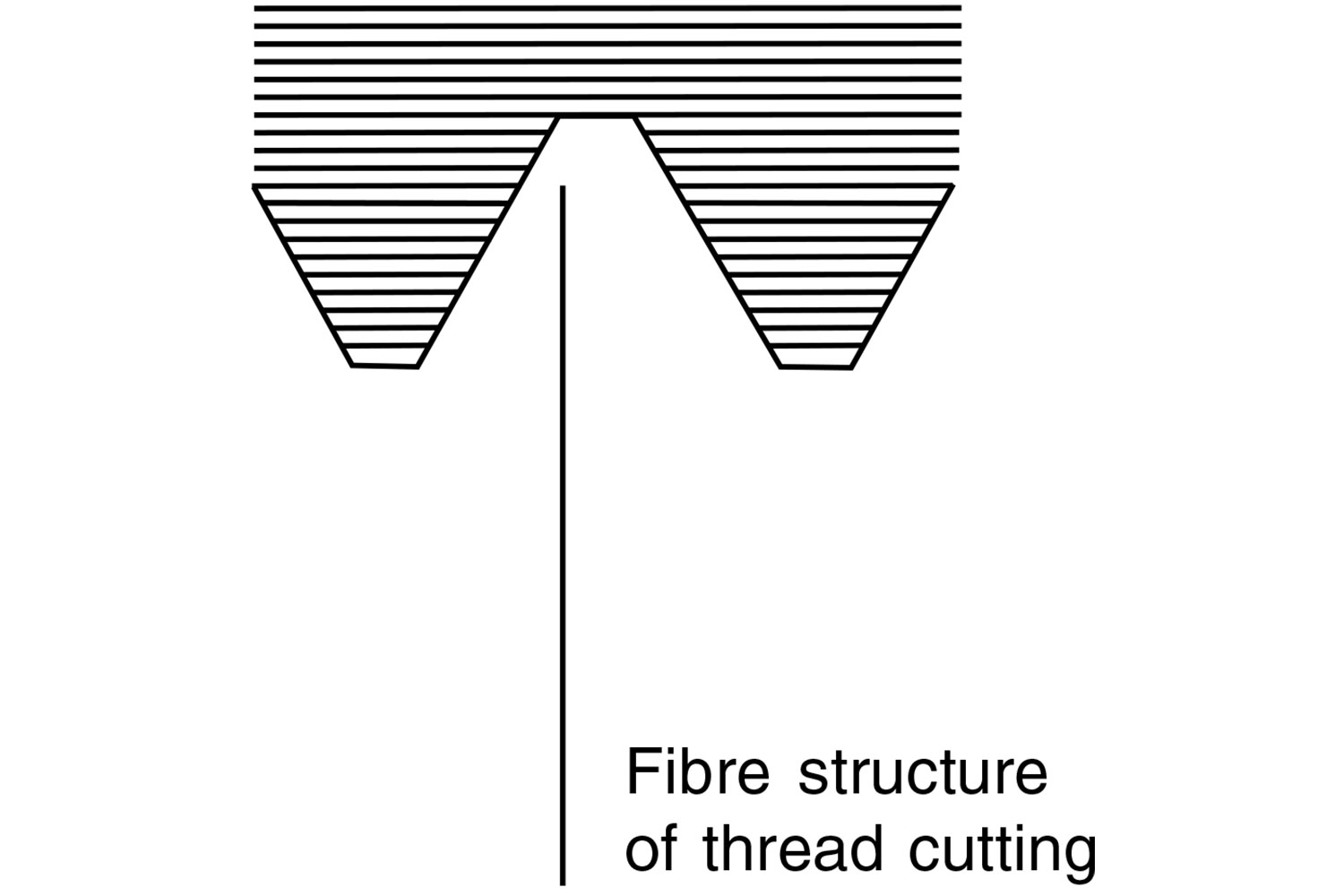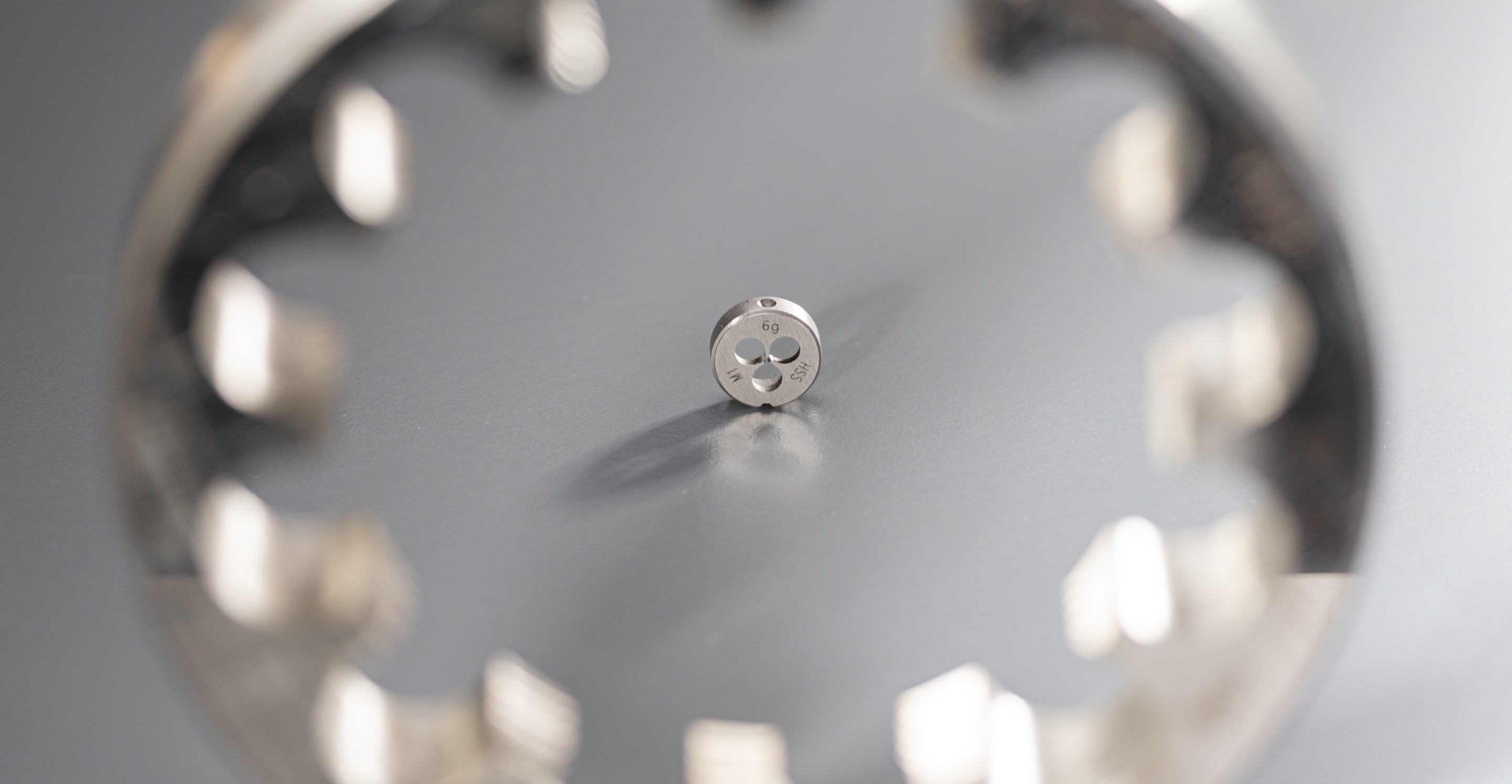Fluteless Machine Tap with oil groove DIN 371 Form C HSSE ISO3X (6GX) - M 10 x 1.5
€20.90
VÖLKEL delivers exclusively to specialized dealers. Online you can buy VÖLKEL products here.
The prices are in Euro plus VAT and shipping, insurance and packaging costs.
VÖLKEL Machine Thread Former with Lubrication Groove DIN 371 Form C HSSE ISO3X (6GX) - M10 x 1.5
For producing high-strength internal threads without chip-related issues, the VÖLKEL Machine Thread Former with Lubrication Groove DIN 371 Form C HSSE ISO3X (6GX) - M10 x 1.5 is the top choice! This innovative tool forms threads by displacing the material rather than cutting it, offering numerous advantages over conventional taps. It is optimized for machine use and delivers precise, highly durable threads.
What is a Machine Thread Former?
A machine thread former (also known as a thread fluteless tap or thread rolling tap) is a tool for chipless internal thread production. Unlike a tap that cuts material (producing chips), the thread former plastically deforms or displaces the material to create the thread profile.
How it works:
The thread former has no cutting edges in the traditional sense. Instead, it has a profiled geometry matching the target thread. When driven into a pre-drilled core hole (which is slightly larger than for cut threads), the material is displaced sideways into the shape of the thread profile.
Applications:
Used on thread cutting machines, machining centers, or drilling machines with synchronized feed.
When to Use a Thread Former?
Thread formers are used in specific applications where their benefits are most effective:
-
Chipless internal thread production – their main purpose.
-
Materials ideal for plastic deformation, such as:
-
Steel up to ~700 N/mm² tensile strength (e.g. structural steel)
-
Stainless steels (good forming performance)
-
Long-chipping non-ferrous metals like copper, brass, bronze, and aluminum alloys
-
Zinc alloys
-
-
Hole types: Suitable for through holes and blind holes – no chip evacuation required.
-
When high thread strength is required – formed threads are cold-worked and thus stronger.
Advantages of the Thread Former
Compared to traditional thread cutting, chipless forming offers several decisive benefits:
-
Longer tool life: No cutting means less wear and less friction, extending the tool’s lifespan.
-
Higher permissible speeds: Chipless forming allows higher rotational speeds, shortening cycle time.
-
Dimensional and profile consistency: Formed threads tend to be more precise and uniform.
-
Stronger threads: Cold work hardening during forming increases thread strength—formed threads are often stronger than cut ones.
-
High breakage resistance: No fragile cutting edges; very robust and resistant to breakage.
-
No chip issues: Especially important in blind holes or when machining delicate/small parts. No chips = no chip evacuation or cleaning required.
DIN 371 – The Standard for Machine Taps and Formers
DIN 371 is a German industry standard defining the dimensions and requirements for machine taps (and formers) with a reinforced shank for ISO metric threads up to M10.
-
Reinforced shank: The shank diameter equals the nominal thread diameter (e.g., 10 mm for M10x1.5), providing added strength and breakage resistance, especially with smaller tools.
-
Standard thread (M): This former is for ISO metric standard threads—your tool is for M10 x 1.5, a common metric pitch.
-
Ensures compatibility: Compliance with DIN 371 ensures the tool meets quality standards and works reliably with corresponding machines and tolerances.
Form C – The Chamfer Form
Form C refers to the chamfer style of the thread former. Unlike cutting taps, the chamfer is designed for easy insertion and initiation of the forming process.
-
Form C (approx. 2–3 thread leads): A common style offering a good compromise between easy tool start and fast thread forming. Suitable for most general applications.
HSSE – The Material for Demanding Applications
HSSE stands for High-Speed Steel with Cobalt—an enhanced version of traditional HSS.
-
With Cobalt (≥ 5%):
-
Increased hot hardness: Maintains hardness even at high temperatures during forming.
-
Improved wear resistance: Cobalt makes the material tougher and more durable—extends tool life significantly.
-
-
Usage: HSSE tools are preferred for hard-to-form materials and high-temperature conditions.
ISO3X (6GX) – The Thread Tolerance
ISO3X (6GX) defines the tolerance class for the formed internal thread (female thread), adapted for the specifics of the forming process.
-
ISO3X:
-
"3" = very tight tolerance grade, indicating high thread precision.
-
"X" = special designation for formed threads, accounting for deformation-related effects.
-
-
6GX:
-
"6" = common ISO tolerance quality level.
-
"G" = tolerance position (internal thread slightly larger than nominal size to account for spring-back after forming).
-
"X" = again, the special adjustment for formed threads to ensure proper fit with standard external threads (e.g., 6g or 6h).
-
This tolerance class ensures the formed thread meets fit and function requirements.
VAP (Vaporized) – The Surface Treatment
VAP stands for vaporized (steam-treated). This is a surface refinement applied to tools.
Process:
A thin oxide layer (usually iron oxide) is created on the tool surface via steam treatment.
Benefits:
-
Reduced friction: The porous oxide layer retains lubricant, reducing tool-to-material friction.
-
Improved material flow: Although chips aren't formed, the surface eases material displacement.
-
Wear protection: Offers resistance to adhesion and galling wear.
-
Visual ID: VAP tools have a dark gray to black surface finish.
Lubrication Groove – Optimal Cooling for Deep Threads
The lubrication groove is a key feature, especially in the following use cases:
-
Function: One or more grooves run along the tool shaft, channeling coolant/lubricant directly to the forming zone.
-
Advantage:
-
Effective lubrication for thread depths >1.5×D: Deeper threads (more than 1.5× nominal diameter) are harder to lubricate. This groove ensures lubricant reaches critical zones.
-
Reduced heat and friction: Good lubrication minimizes friction and heat, protects the tool, and improves thread quality.
-
-
Recommendation: Use graphite-containing lubricants, cutting oils, or proper additives to fully utilize the groove’s effect.
Advantages:
- longer endurance as cutting taps
- higher possible cutting speed
- steady exactness of dimension and profile
- high stability of the forming threads
- high security against fracture
- no removal of swarf, no jaming of swarf
Application:
for chipless production of internal threads
VAP (Steam Tempered): - for steel up to approx. 700 N/mm² - contructional Steel - stainless steel - for long-chipping nonferrous Metal (Cooper, Brass, Bronze, Alu) - Zinc alloys - for through and blind holes
Oil Groove:
- for optimueffect of lubrication of thread depth over 1,5 x D
- Use graphite lubrication/oil or add another suitable lubricant.
| Type of thread | metric ISO-thread |
|---|---|
| Standard | DIN 371 |
| Form | Form C |
| Material | HSSE |
| Tolerance | ISO3X (6GX) |
| Size | M 10 x 1.5 |
| Overall length (L1) | 100 mm |
| Thread length (L2) | 24 mm |
| Core hole diameter (D1) | 9.3 mm |
| Shank diameter (D2) | 10.0 mm |
| Drive connector | 8.0 mm |
| Item number | 35616-6G |
| Application | for through and blind holes |
| Thread standard | DIN 13 |
VÖLKEL Machine Thread Former with Lubrication Groove DIN 371 Form C HSSE ISO3X (6GX) - M10 x 1.5
For producing high-strength internal threads without chip-related issues, the VÖLKEL Machine Thread Former with Lubrication Groove DIN 371 Form C HSSE ISO3X (6GX) - M10 x 1.5 is the top choice! This innovative tool forms threads by displacing the material rather than cutting it, offering numerous advantages over conventional taps. It is optimized for machine use and delivers precise, highly durable threads.
What is a Machine Thread Former?
A machine thread former (also known as a thread fluteless tap or thread rolling tap) is a tool for chipless internal thread production. Unlike a tap that cuts material (producing chips), the thread former plastically deforms or displaces the material to create the thread profile.
How it works:
The thread former has no cutting edges in the traditional sense. Instead, it has a profiled geometry matching the target thread. When driven into a pre-drilled core hole (which is slightly larger than for cut threads), the material is displaced sideways into the shape of the thread profile.
Applications:
Used on thread cutting machines, machining centers, or drilling machines with synchronized feed.
When to Use a Thread Former?
Thread formers are used in specific applications where their benefits are most effective:
-
Chipless internal thread production – their main purpose.
-
Materials ideal for plastic deformation, such as:
-
Steel up to ~700 N/mm² tensile strength (e.g. structural steel)
-
Stainless steels (good forming performance)
-
Long-chipping non-ferrous metals like copper, brass, bronze, and aluminum alloys
-
Zinc alloys
-
-
Hole types: Suitable for through holes and blind holes – no chip evacuation required.
-
When high thread strength is required – formed threads are cold-worked and thus stronger.
Advantages of the Thread Former
Compared to traditional thread cutting, chipless forming offers several decisive benefits:
-
Longer tool life: No cutting means less wear and less friction, extending the tool’s lifespan.
-
Higher permissible speeds: Chipless forming allows higher rotational speeds, shortening cycle time.
-
Dimensional and profile consistency: Formed threads tend to be more precise and uniform.
-
Stronger threads: Cold work hardening during forming increases thread strength—formed threads are often stronger than cut ones.
-
High breakage resistance: No fragile cutting edges; very robust and resistant to breakage.
-
No chip issues: Especially important in blind holes or when machining delicate/small parts. No chips = no chip evacuation or cleaning required.
DIN 371 – The Standard for Machine Taps and Formers
DIN 371 is a German industry standard defining the dimensions and requirements for machine taps (and formers) with a reinforced shank for ISO metric threads up to M10.
-
Reinforced shank: The shank diameter equals the nominal thread diameter (e.g., 10 mm for M10x1.5), providing added strength and breakage resistance, especially with smaller tools.
-
Standard thread (M): This former is for ISO metric standard threads—your tool is for M10 x 1.5, a common metric pitch.
-
Ensures compatibility: Compliance with DIN 371 ensures the tool meets quality standards and works reliably with corresponding machines and tolerances.
Form C – The Chamfer Form
Form C refers to the chamfer style of the thread former. Unlike cutting taps, the chamfer is designed for easy insertion and initiation of the forming process.
-
Form C (approx. 2–3 thread leads): A common style offering a good compromise between easy tool start and fast thread forming. Suitable for most general applications.
HSSE – The Material for Demanding Applications
HSSE stands for High-Speed Steel with Cobalt—an enhanced version of traditional HSS.
-
With Cobalt (≥ 5%):
-
Increased hot hardness: Maintains hardness even at high temperatures during forming.
-
Improved wear resistance: Cobalt makes the material tougher and more durable—extends tool life significantly.
-
-
Usage: HSSE tools are preferred for hard-to-form materials and high-temperature conditions.
ISO3X (6GX) – The Thread Tolerance
ISO3X (6GX) defines the tolerance class for the formed internal thread (female thread), adapted for the specifics of the forming process.
-
ISO3X:
-
"3" = very tight tolerance grade, indicating high thread precision.
-
"X" = special designation for formed threads, accounting for deformation-related effects.
-
-
6GX:
-
"6" = common ISO tolerance quality level.
-
"G" = tolerance position (internal thread slightly larger than nominal size to account for spring-back after forming).
-
"X" = again, the special adjustment for formed threads to ensure proper fit with standard external threads (e.g., 6g or 6h).
-
This tolerance class ensures the formed thread meets fit and function requirements.
VAP (Vaporized) – The Surface Treatment
VAP stands for vaporized (steam-treated). This is a surface refinement applied to tools.
Process:
A thin oxide layer (usually iron oxide) is created on the tool surface via steam treatment.
Benefits:
-
Reduced friction: The porous oxide layer retains lubricant, reducing tool-to-material friction.
-
Improved material flow: Although chips aren't formed, the surface eases material displacement.
-
Wear protection: Offers resistance to adhesion and galling wear.
-
Visual ID: VAP tools have a dark gray to black surface finish.
Lubrication Groove – Optimal Cooling for Deep Threads
The lubrication groove is a key feature, especially in the following use cases:
-
Function: One or more grooves run along the tool shaft, channeling coolant/lubricant directly to the forming zone.
-
Advantage:
-
Effective lubrication for thread depths >1.5×D: Deeper threads (more than 1.5× nominal diameter) are harder to lubricate. This groove ensures lubricant reaches critical zones.
-
Reduced heat and friction: Good lubrication minimizes friction and heat, protects the tool, and improves thread quality.
-
-
Recommendation: Use graphite-containing lubricants, cutting oils, or proper additives to fully utilize the groove’s effect.
Advantages:
- longer endurance as cutting taps
- higher possible cutting speed
- steady exactness of dimension and profile
- high stability of the forming threads
- high security against fracture
- no removal of swarf, no jaming of swarf
Application:
for chipless production of internal threads
VAP (Steam Tempered): - for steel up to approx. 700 N/mm² - contructional Steel - stainless steel - for long-chipping nonferrous Metal (Cooper, Brass, Bronze, Alu) - Zinc alloys - for through and blind holes
Oil Groove:
- for optimueffect of lubrication of thread depth over 1,5 x D
- Use graphite lubrication/oil or add another suitable lubricant.

